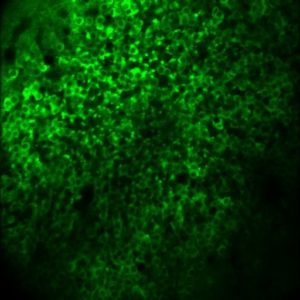
Neurons in the hippocampus encode a spatial map of learned knowledge, helping humans and other mammals navigate the world, according to a study published in Nature.
The arrangement and activation order of hippocampal neurons can represent both a physical environment and an abstract concept, such as position in a social group. The hippocampus is prone to injury after stroke and is often affected in epilepsy and other neurodegenerative disorders, so learning more about how information is structured can help therapies in the future, according to Lucas Pinto, MD, PhD, assistant professor of Physiology and co-author of the study.
“Understanding the principles and details of how the hippocampus supports cognitive behavior could have big impacts on how we treat hippocampal dysfunction down the road,” Pinto said.
This study was conducted in the laboratories of Carlos Brody, PhD, the Wilbur H. Gantz III ’59 Professor of Neuroscience at Princeton University and David Tank, PhD, the Henry L. Hillman Professor of Neuroscience and co-director of the Princeton Neuroscience Institute.
Previous studies in rats have shown a subset of hippocampal neurons — cornu ammonis 1 (CA1) — increase their firing rate when the animals moved through specific locations in a given environment. Further studies demonstrated the neurons also encode time, auditory frequency, odors and taste.

Together, these previous studies had suggested this dual-track encoding is the result of geometric structure at the cellular level, but exactly how this phenomenon operates remained unknown.
In the current study, investigators used genetically modified mice with a fluorescent calcium sensor, allowing detection of neuron activity at a granular level. The mice performed tasks combining navigation with decision-making, requiring the subjects to learn a virtual-reality maze to receive a reward.
After recording neuron activity, the scientists used machine learning techniques to study how hundreds of neurons in the hippocampus behaved and coordinated their activity. They found that correlations in how individual neurons were activated gave rise to an intricately shaped object, a geometric manifold.
“We refer to these as ‘shapes of knowledge,’” said Manuel Schottdorf, PhD, postdoctoral fellow at the Princeton Neuroscience Institute and co-lead author of the study.
The manifold not only includes information about the mouse’s location in physical space, but also the evidence it accumulated to solve the maze.
“Essentially, this means that the hippocampus not only creates maps of where an animal is, but also what it’s thinking when it’s trying to make a decision,” said Edward Nieh, PhD, postdoctoral fellow at the Princeton Neuroscience Institute and co-lead author of the study.
This joint representation of physical and cognitive information could help reconcile different scientific perspectives on the role of the hippocampus, according to Pinto. Rather than relying on single cells representing different things, the hippocampus encodes these two types of information simultaneously and partially relies on the activation sequence to distinguish between stored information.
“It is perhaps possible that we could leverage this knowledge in the future to devise new forms of treating hippocampal dysfunction by using more sophisticated brain stimulation paradigms that mimic naturally occurring spatiotemporal patterns of activity to restore normal cognitive function,” Pinto said.
This work was supported by National Institutes of Health grants U01NS090541, U19NS104648 and F32MH119749, as well as the Simons Collaboration on the Global Brain.






